By Carl Valle
It’s hard to narrow down the top weight room tests, but after plenty of requests here are my current favorites, including the origins and influences of them. Some of them are well known, some are exotic, and some require a little equipment outside the weights used, but all of them are scientifically valid and team friendly. It can be difficult to choose the tests for many reasons, but the most difficult decision was to choose tests that a wide audience would find useful. With an appreciation for data and technology, some of the tests will require a little help from measurement tools and coaches should think about what is important to them.
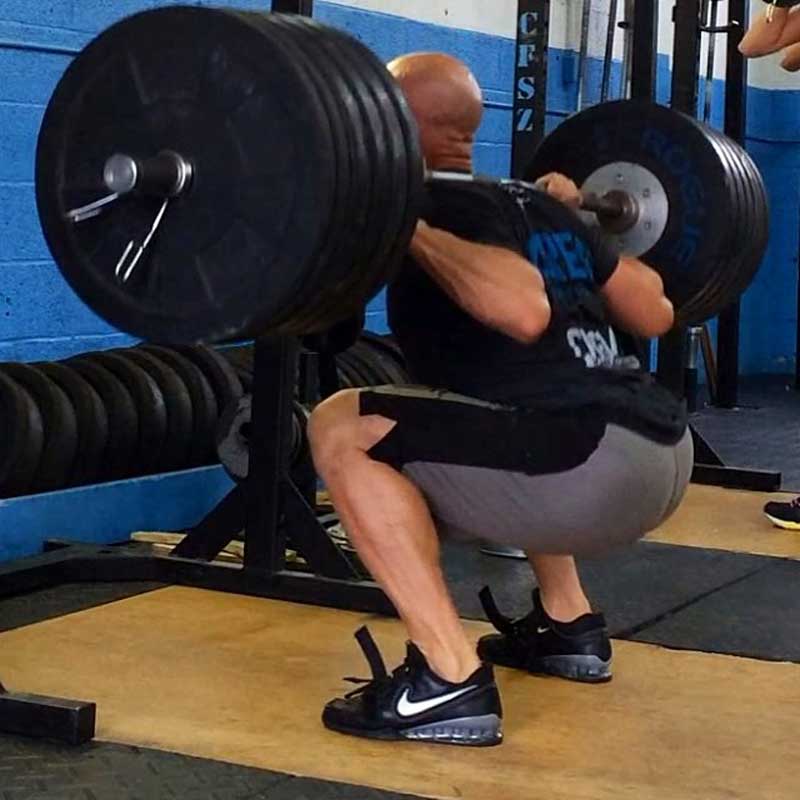
Figure 1: Photo Credit – Funbobby Kwasny at Crossfit SubZero, Thunder Bay Canada.
Selecting the Right Tests
When I get asked what tests I find valuable, I respond first with what transfers and what influences long-term development. It’s important to know what activities can give you a more rapid and easier improvement acutely, and what activities will be a long-term investment. For example doing snatches from blocks is a staple of mine with some athletes because they are quick to teach and are great tools when working on power. Very few of my athletes jerk unless they are power athletes with a history of great strength training experience. Athletes typically require proficiency in the jerk pattern as well as cleaning to get the bar up. Not too many soccer athletes can jerk, but getting an athlete to snatch 75% of their bodyweight in a year shouldn’t be a hard challenge.
My criteria for tests are straightforward. They should be part of the training process and act as workouts themselves. Vertical jump testing, for example, is very revealing, but nobody is going to product the next Klokov from repeated jumps, and weight room tests should include external weight. I included jump squats and weighted countermovement jumps since they had an additional load instead of bodyweight only. I did not include traditional jump tests or field tests. The goal of any weight room test is to have some transfer to sport, and an easy way to see changes in global performances is to do linear and change of direction speed tests. Some tests are more indirect in transfer, but don’t underestimate the value of general strength and power. Last, the need for the tests to be clear and practical is essential.
Final Considerations of the Tests
I included some outside expert advice and the influences of why I chose tests so readers can see my reasoning. Also included with the tests and rationale behind their selection, are some details in the administration of the data. My hope is that all of the tests are a guide for coaches trying to apply sound sport science and intelligent coaching. One last parting thought on safety, always be wise and walk away with something than push things too far. None of the tests are dangerous but with any training risk is involved. Be sane and focus on the process rather than record boards and making team coaches happy.

The Classic Maximal Strength Test 2.0
Everyone should know what a maximal strength test is, but not everyone should be doing it. Most maximal strength tests are usually barbell tests, but some include machines or alternative options like using dumbbells or other loaded equipment like weighted vests. I prefer the idea of a near absolute one-repetition max and take advantage of current methods of evaluation from experts like Mladen Jovanovic. His recent innovation on strength testing improves the accuracy of estimated one repetition testing with submaximal loads. Every coach worth their salt worries about injury when doing heavy loads, and the goal of intelligent training is to improve athletic performance without increasing the risk during training time. So if I can get very accurate and valid estimation of maximal strength without the cons of absolute testing, I am interested. I do a lot of singles with exercises but choose to use specific outputs with power measurement tools than just prescribe loads and percentages. The reason for focusing on bar path, bar displacement, and bar velocity is the need to get very granular data on the true potential of the athlete for that exercise.
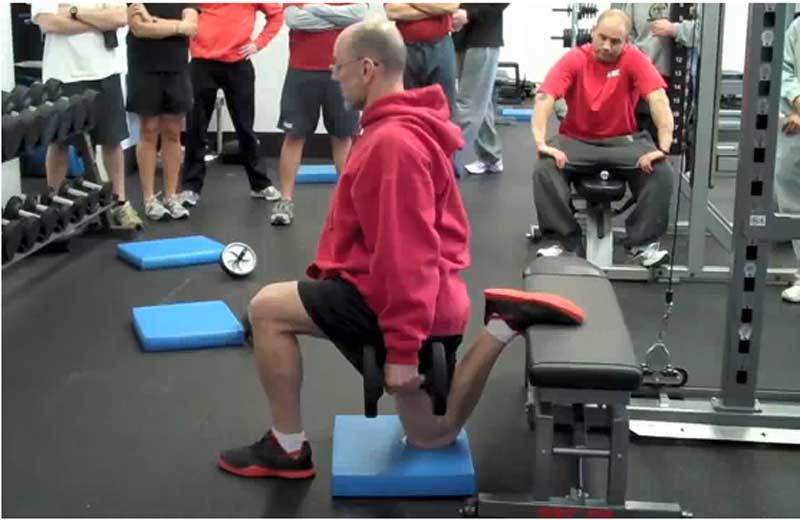
Figure 2: Strength tests are with current technologies and innovations in data analysis. Above is Michael Boyle demonstrating the Rear Foot Elevated Split Squat. Using Velocity Based Training and Mladen’s formula for getting repetition maximum estimation based on speed of the lifts, it’s a good compromise to get submaximal lifts to see estimated absolute abilities rather than what one can do for just five reps or similar. Using sound math and technology, coaches can continue to employ their methods while adding deeper insight.
Mike Boyle prefers to use a combination of weight vest and kettle bells for his Rear Foot Elevated Split Squats (RFESS) testing, and I recommend an enterprise wearable power device for his athletes. This way he can do submaximal testing for his athletes without changing the protocol. Higher rep testing is harder to select weights that hit the range selected, and being too light will decrease the accuracy of the estimation. If an athlete is skilled enough and experienced, exercise can detect the output accurately with a wearable, thus increasing the accuracy of the ability. Traditional testing of squatting and benching will find near unlimited options for testing strength, and adding other measurements can sharpen the information gathered from the results.
Take Home Lesson- I know body composition is a tricky thing, but in college it’s not just performance but health. If you can get something beyond weight, it makes athletes start thinking about their body speed being a power to weight ratio when doing a strength test. I strongly recommend reading Mladen’s work on using Gymaware for estimating 1 RM from bar velocity. I prefer squatting over deadlifting for transfer, but most strength tests are not predictors of success, just indicators of change from the program.

Snatch Options for Power Indices
Many coaches ask me why I don’t find cleans to be the best options for athletes, and I respond I love them for training but not for testing. What I have changed over the years is the use of more snatching because I find more people can modify their body mobility than wrist mobility, and I can use lighter loads overall. When training for power, I like high wattage but have come to the agreement that Bryan Mann found years ago that improvements in cleans are not tickets to improving performance. Coach Mann’s test on Velocity Based Training provides thought provoking ideas on bar speed and adding more precision in training. Bryan Mann coined the term Velocity Based Training and focused on science instead of branding, helping the profession evolve further. Two primary driving variables are popular now with bar tracking technologies, but peak or average power and speed are not ideal metrics. Recent advancements of Coach Mann and others like Dan Baker are leading us away to raw metrics and sending us to combination metrics that include ratios and other forms of the numeric expression. The reason I like snatches from small blocks is that the double knee bend can be evaluated and compared to above the knee hang or high block snatches. Focusing on the length and higher extension of the exercise provides better transfer and muscle recruitment, and the exercise is more valid in expressing power beyond just peak or average scores.
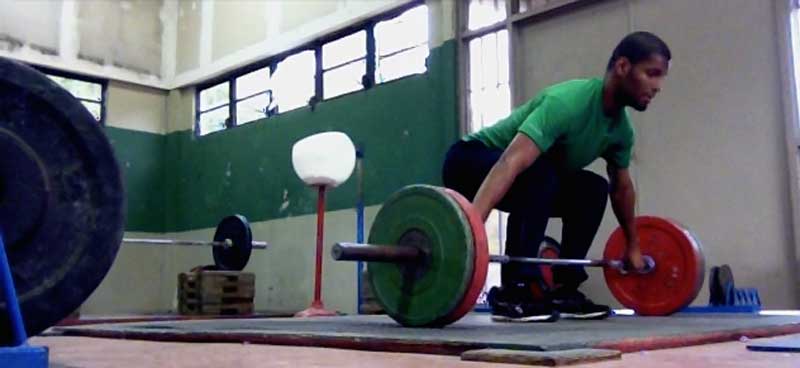
Figure 3: Two-time Olympic Athlete Hector Cotto is doing Snatches in Puerto Rico. Using tools that can address body types that may be less advantageous with specific exercises, coaches can see more information about how athletes are improving rather than just crude outputs.
Moving a bar fast over time (average) and having a great snap (peak) is not sufficient. Average speed with load is too crude to interpret, and having a maximal output without technique (kinematic information) is not responsible. The argument is that testing for power may be a fool’s errand or wild goose chase, but if you are doing the training test to see if at least you are doing a better job improving that activity. Some tests are not going to show any correlation or causation to ultimate performance, but most training has little transfer in isolation at all. For example, some of the best finishes on the podium in Olympic events never had an all-time test performer in the weight room, but our goal is to make sure one is sufficiently prepared. Power testing increases the probability of evaluating improvement, and one can get a dozen metrics of power without using a force plate. When snatching coaches have two choices when trying to test the exercise.
Above the Knee (hang or blocks) – A nice option for athletes who are not very experienced in the snatch exercise. You want to see the bar distance and mean power to get an audit on full range and high output provided the exercise is done correctly. I am not a big fan of mean or average power, namely because most exercises are more complicated than a simple expression of force, but gross movements are just raw indicators.
Below the Knee (floor or blocks)- The better option is to include some way to allow a double knee bend for interpreting some use of the stretch-shortening cycle. The more elastic contribution of an exercise, the more likely the information is useful because of transfer rate. Peak power and bar displacement is important. Impulse metrics, or force times time can’t be distilled easily with accelerometers, so make sure one is using video or an LPT to gage the algorithm sensitivity.
Take Home Lesson- Let’s start looking at wattage differently than averages or peak points, since we are at the point to look beyond those metrics with the right tools. The future is body type profiling and creating metrics that summarize the output in kilograms, wattage, and temporal factors. Bar path and distance matters, and force-time profiles are what coaches want.

Speed Bench for Central Fatigue Estimation
The only upper body exercise that made the list is the bench press for several reasons. First, the lift is simple and clearly enjoyed by many athletes and coaches, making it a good candidate for testing. Second, many team sports do not tax the upper body in training or in competition−throwers, in season contact and combat sports are excluded−making bench press a possible way to look into the fatigue of the central nervous system. While not perfect and the research is scant on information here, speed bench can address system fatigue when the upper body is not fatigued from training. Looking at the ratio between the lower body lift and running/skating output compared to upper body lifting can show a light correlation to fatigue states that are local (peripheral) and more global (CNS).
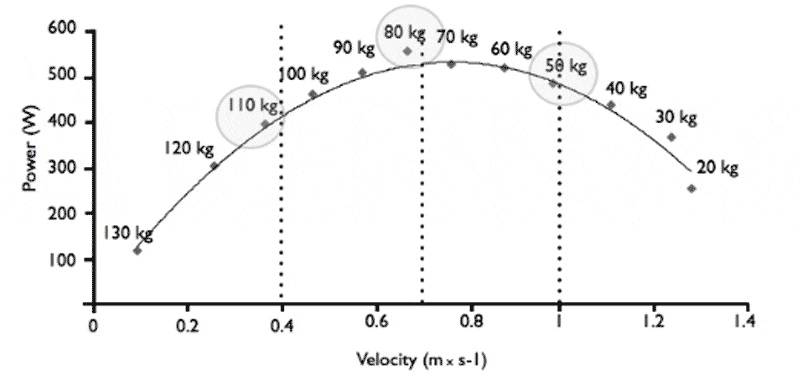
Figure 4: When looking at the wide ranges of bar speed athletes, the ability to see the difference between very heavy loads, medium loads, and light loads isn’t valuable. Knowing the difference between very obvious loads is nice but what coaches want is to see the differences between similar loads over time and the sensitivity requires technology. Ask an athlete if he can tell the difference between 185, 250, and 345 pound bench days is foolish. Coaches want to know if similar workouts not to failure are creating adaptations or digging an athlete further in overreaching states. (Development and Validity of a Scale of Perception of Velocity in Resistance Exercise J Sports Sci Med. 2014 September;13(3):542-549)
Two or three years ago I was told that the golden ratio of two to one (2:1) or double bodyweight bench press was the magic ticket, but the fastest men in the world have lousy bench press numbers. To think Usain is hitting 190 kilos or 400 plus pounds is a joke. The real evaluation is the drop-off from a personal best and the current status of pressing output and the relationship of upper and lower indices for central fatigue. When athletes who are not spending a lot of time pushing or pressing see drops in training numbers, it’s likely that overreaching is happening and a general reduction of load is better than changing a training program.
Take Home Lesson- Fatigue monitoring and Power Management are about seeing internal and external loading and the interaction of the weight room. Doing this is very hard because a huge sampling pool is needed with the necessary articulations to get the context of upper body fatigue as well. By having all of the data in one AMS system like CoachMePlus, Smartabase, and tools by Haloview, coaches can see what is interacting with training.

The Loaded Reactive Jump Squat
I love reactive jump squats because of the eccentric values (lengthening against resistance), not just the concentric (shortening against resistance) information that bar velocity provides. Some coaches have endorsed the RSI or reactive strength index for evaluating the performance. That is foolish for several reasons. Performance should be tested directly as much as possible, and the RSI is not a great test for team sports outside rugby. Olympic sport maybe, but if you looked on the results of every Olympic athlete who won a medal and asked if they have done depth jumps to get them better you will see a mild level of users. If you polled the NBA, NFL, NHL, MLB, and professional soccer clubs if they do it, you will see less than 5% doing this regularly. Jump testing for jump athletes is adding fuel to the fire, since the only time you want to get this information is during training, and most athletes are overloaded because seasons are long and designed for entertainment rather than athlete health. Athletes are too banged up to do jumping, and teams can’t spend time in line with contact mats. Even if one is to buy more mats, the problem of observing and recording data becomes a challenge since many teams don’t have favorable coach to athlete ratios.
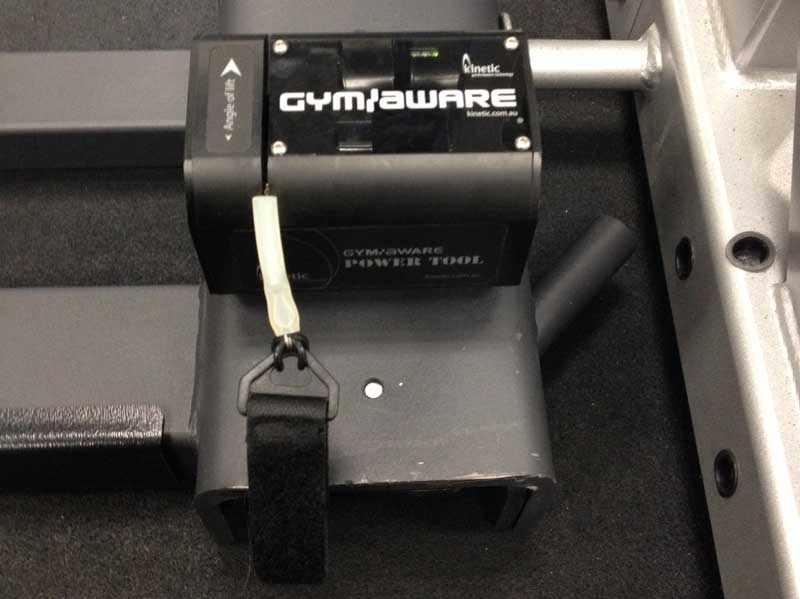
Figure 5: Repeated Squat Jumps with the Gymaware are valuable for coaches wanting to compare the differences between Countermovement Jumps and Repeated Jumps. This comparison requires a load that is very light otherwise the exercise loses elastic responses. The sensitivity needed to determine the kill point of the elastic response requires a device with the precision and accuracy. Gymaware meets these requirements in the LPT market. So far I have not seen validation studies with accelerometer metrics, but the algorithm can do this with enough time since Myotest proved to show value years ago. It’s up to the companies and users to work together to make sure the metrics are valid and reliable.
So why reactive jump squats? Hard to define reactive since it’s not clear about contraction speed, but I like any jump squat activity that includes elastic responses that are better than squat jumps from a static start. Eccentric contractions are major stimulators to adaptation and are also very demanding for recovery. A compromise is to get just enough elastic response for stimulation, but not enough to retard recovery of the body. Coaches want two things from Reactive Jump Squats, a metric of work done (power compared to load and body weight) and the ability to be consistent with the technique. Reactive jump squats are not heavy because the athlete must have sufficient airtime to get a good foot contact, and they need enough impulse to generate enough power to get off the ground.
In addition to using force plates and spending time on video analysis, coaches want estimations that are actionable. A good solution is accelerometers on the bar or LPT products like Gymaware. Tendo doesn’t have enough tension and slack while dropping down into a loading position eccentrically will not be accurate enough to use the data. Also angle sensors correct the lack of horizontal data, so bar bath and athlete technique differences can be accounted for. You want to create a force-time curve that is slower than the RSI, but more useful than a CMJ (countermovement jump).
Take home Lesson: Eccentric and elastic information matters. I hate the Tendo Unit for many reasons, but the lack of a quality way to get eccentric data is why accelerometers and angle tools with Gymaware make Tendo obsolete and worthless accuracy numbers. Jumping is demanding for team sports or those banged up from heavy training, so a compromise Reactive Jump Squats. Getting high effort, sufficient elastic response, and minimal impact on connective tissues.

The Raptor
Over the last few years, several coaches and experts have influenced me to go beyond staying in my comfort zone and after months of literal blood and sweat, and tears of joy I have the uber metric. Thanks to hard working athletes and great advisers, my favorite test is four sets of four different exercises progressed by blending the contractile dynamics of muscle into something beautiful. Be warned though, this test requires additional metrics outside the weight room, so I lied a bit with the title.
- Set 1 Bar Complex of Choice after general warm-up
- Set 2 Jump Squat X 5
- Set 3 Counter Movement Jump X 5
- Set 4 Repeated Jump Squat to Early Fatigue 6-8 reps
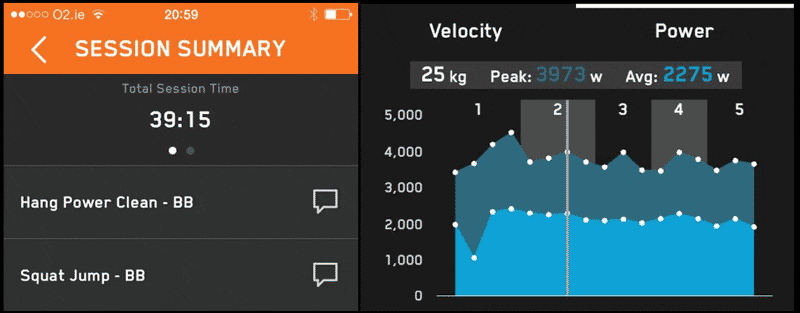
Figure 6: Combination metrics and fusion between other measurements outside the weight room is the future. Here is an iPhone screenshot of a training session with one of the best coaching minds in Ireland, Shane McCormack. Note the move away from one metric only on the Push Strength device reading. The display is shown as a horizontal presentation for this article; the actual screen display is a portrait and not split landscape.
This, believe it or not, is not a workout. If this is too much testing for you rethink your athlete capacity a bit as I have seen this work with soccer athletes at high levels, provided they started the season lifting real loads and not doing workouts for retirement homes. If every athlete can do this once a week or twice a month, you can reveiw a large amount of information. If you are doing hormone testing and full biomarker analysis, you are good shape. If you add readiness data and TMG and Myoton readings, then you are ahead of the curve. So far only six consultants in the world do this, and no North American Sports team has the algorithm to interpret this. Doesn’t matter, just do the tests and see what you can glean out of it.
Benefits of doing the test series above
- The entire series is a gradual rise of output that makes a safe, but explosive warm-up for a great training session.
- The cumulative work does give athletes some small capacity in the weight room, and this adds up and pays off at the end of the season.
- Most coaches are familiar with the exercises, and they are rather simple.
- Coaches can look at the EUR or Eccentric Utilization Ratio between sets 2 and 3, and contrast stiffness metrics between sets 3 and 4.
- Blood profiling and TMG can get an indication of the fiber estimation, and hormone and endurance biomarkers can track changes over the season to personalize training in-group environments.
- The testing can calibrate against physiological markers like CML, EEG, and HRV
- Real-time data with a simple iPad can help athletes on the fly decide if they are going to do the workout as requested or do something submaximal by backing off just a bit. I like Olympic lifting and then doing some squatting.
Take Home Lesson- You don’t need a force plate and much more than a VBT device. As the products become cheaper, expect high school coaches to rethink what sport science and administration is demanding of them. It’s no longer cookie drive sales going to pay for uniforms; it’s going to be additional fundraisers to pay for equipment in the weight room beyond the barbells and stations. The goal of good testing is to make it camouflaged as training and use the data by mining it as much as possible.
Closing Thoughts on the 5 Tests
Maybe you have your tests and better metrics. Good! The key is to write down why you like some tests and ways to make them better. A wise coaching adage is good testing is simply good training, and conversely good training is testing in some way. Coaches can create a culture or work with existing cultures by embedding testing (Marco Cardinale Term) into workouts. Some words of advice with testing too often, testing not enough, and test days. I don’t like resting too much for tests because it’s hard to compare the tests during heavy training or competition phases so don’t add more than an extra day or two. Make sure the music and shouting is a minimum, since arousal levels can inflate scores and make athletes dependent on external resources instead of the training. Finally, the rhythm of testing is enough to keep people honest and not burn them out. Just like training, athletes get bored of doing the same things so make sure you don’t test more than once a week, and don’t leave a gap of more than 30 days from testing.
Note: Based on current information, Assess2Perform plans to allow RFD metrics and Impulse data to the coaches. So far nothing is available, but Myotest in the past was able to provide a force-time curve and data from the Bar Sensei should be ready soon. Dan Baker wrote some great articles on strength training and I suggest reading them.
Resources
1. For Mladen’s article on estimating 1 RM on lifts.
2. For a primer on explosive strength.
3. Emerging areas of quantifying CNS and local fatigue with EMG.
4. Interesting ideas on Bar, Body, and System power
5. Nice primer on the Eccentric Utilization Ratio by Dr. Hartman.
Collaboration
Special Thanks- Many people should be given credit to this article as I am not writing from meditations at the nearby coffee shop. Please read Strength and Power in Sport by Paavo Komi and do your homework. The tests and my interpretations are not perfect, so feel free to comment below.
I wanted to thank Inigo Mujika, Landon Evans, Mladen Jovanovic, Hakan Andersson, Bryan Mann, Marco Cardinale, Mike Stone, Henk Kraijinhoff, Dan Pfaff, Jose Fernandez, The Alosi Brothers, Ryan Reynolds, Mehis Viru, Jim Snider, Mike Potenza, Boo Schexnayder, Gary Winckler, Roger Enoka, Gil Blander, Mike Boyle, Matt Delaney, Dan Baker, Dr. Ashley, and the late Carmelo Bosco. Especially my grandfather who tutored me in math and physics for 1000 hours from 1990-1994.
Many have influenced me so my apologies if I missed anyone.
Please share this article so others may benefit.
[mashshare]


Hi Carl
Thanks for sharing this really interesting information. I just have a couple of questions if you don’t mind. Would you be able to elaborate on what a loaded reactive jump squats is (i.e. are you talking about consecutive jumps?).
Also, why is RSI potentially good for rugby but not other team sports.
Thanks again for the interesting blog
Fantastic article and explanation.
James,
The RSI as you know James is a double leg jump from a box, and the ratio of flight time and contact time is used to indicate neuromuscular fatigue. The issue is that in the NBA and NHL, a set of sports that compete with very few days to prepare between them makes the test very difficult to apply in team settings. First the fatigue is obvious but what are you going to do? NBA athletes are jumping too much more jumping, even a vertical is going to be tough to motivate a full effort. Hockey may not having the issues with jumpers knee, but administrating this on the road is a nightmare as you are dependent on road facilities. MLB and the CBA doesn’t force athletes to train, and most of the athletes are playing nearly every day making it hard as well. Finally the NFL is similar to Rugby but the rosters are huge and doing so is difficult when the CBA doesn’t force athletes to train on Tuesday, and so many athletes are sore for collisions to even test. Rugby is a contact sport, but the culture is more collaborative. Some teams are doing CMJ with bodyweight using force plates, but the RSI would require each weight station to have a contact mat and this is while possible, is hard to do with teams when two coaches are all that is available and interns may not be the best staff to trust on it. I am not saying it’s impossible to implement the RSI, I just shared an option with test 5 that maybe a little more joint friendly and team friendly from a practical side.
The term reactive jump squats is just a repeat jump squats and it’s assumed that the jump previously had a COM or center of mass displacement to create enough overload that it is more demanding than CMJs. They are continuous and include an eccentric overload greater than a standing drop CMJ.
Thanks for getting back to me Carl. I completely understand not wanting to overload jumping, but I’m not sure how replacing RSI from a drop jump height of 30-40cm, for example, which is a typical height used is going to be less taxing than loaded reactive squat jumps? I think you would find the peak GRF and joint reaction forces will be higher in this than in the drop jump. Also would you not have the same concern about using a gymaware as you have with using a jump mat?
I hope you don’t mind the questions, I am just curious as to your thoughts.
Thanks again
James,
RSI from low height boxes are great ways to evaluate readiness and Rugby uses it because of culture and the question is how to include this in team sport.
https://www.freelapusa.com/depth-jumps-and-speed/
I prefer the RSI for those in weekly competition sports and coaches have the RSI Modified option as well. The reason I like loaded exercises in the weight room is because I think the focus on performance enhancement may have hurt the drive to get basic strength work done, and barbells are now replaced by everything besides lifting.
The RSI is a landing that typically is very forefoot and knee dominant and is going to tell more about the stiffness then the hip power. Due to the Squat jump having load, if done right you will see more hips used provided the athletes are using good technique. Contact time and Air time are great, but valid measurements with team athletes tend to be poor since athletes will game the tests with a little hip flexion and foot pick ups. I like displacement of the COM over air time, since just jump mats have created more claimed 40 inch verticals from landings that are not straight legged.
I have nothing against RSI for data collection, but the training effect is not high, and even I don’t like doing warm-ups without some load. The RSI can get data, but I like training and data better. Just a preference for team sports and I use RSI testing more in the field or track. I am not saying you can’t do jump testing in the weight room, but the title was to ensure those wanting to get more out of their training and weight lifting sessions had options that were more barbell friendly. For Mike Boyle’s sake, I tried to find something with wearable VBT options for his RFESS testing.
So for NFL, Elite Football, and Rugby the RSI is an option and some clubs do it, but they are often complaining they can’t guys to lift or have time to train with travel and contracts. I am going to talk about RSI later and what you can get from it beyond the estimated (not perfect) time to stabilization.
Even using the technology without video (kinematic data) should be questioned, since athletes may use different technique if they don’t have reactive abilities. So GRF may be more with the loaded squat or more with RSI, depending on test type, load , and ability of course. My main issue with contact mats is that they are jumping only and while teams may have million dollar budgets for players, coaches have to fight for equipment. An enterprise LPT James can do all of the tests, included unloaded jumps without arms or with a hip belt.
Anyone doing the RSI test in team settings is not wrong, but motivation to jump honestly (100% maximally ) from guys during heavy competition is difficult to get and even lifting is likely in question so I would also put limits to the test above.
If you have any team in the USA that is doing RSI effectively and their speed, jump, and improvements are coming from internal training please share. I am not saying the RSI is impossible to implement, just for some reason is not gaining ground.
Thanks Carl.
Yes testing RSI is certainly more a measure of vertical stiffness and does not involve the hips to a great extent. But then does this not make it a good test for assessing stiffness qualities of an athlete (especially the knee and ankle)? For some team sports this quality is still important especially for sprint performance beyond the first few steps (i.e. soccer, rugby, lacrosse). Obvioulsy provided data are reliable etc and athletes are able to perform with consistent technique.
I still think that loaded reactive jump squats would be more stressful to the system than drop jumps for RSI and it is no easier to use a Gymaware than a jump mat, so I don’t necessarily agree with these rationale, but I do agree that the training effect may not be that great. I also agree if you are short of time and trying to get as much bang for your buck as possible then the jump you have suggested is going to achieve that better than a drop jump for RSI. However I know of a number of teams (in rugby, netball, field hockey) in the UK that achieve gains in speed, strength, power through various training methods and use a drop jump as a weekly monitoring tool. Maybe they have more time with the athletes than the teams you speak of.
Thanks carl
James,
Take a look at the sports you have shared and note two are not professional. I think Rugby and any weekly sport adding in an RSI and that can be done if you want. The RSI from 40 cm is not a problem and most use that for testing, but RSI for advanced athletes will get much higher and lead to DEPTH JUMPS. RSI with 40 cm boxes are not nearly the stress of reactive jump squats based on two big factors. Testing for readiness and testing to for maximal performance. I was not clear on this and that is another article next week.
(1) When I compare tests, I try to compare training tests versus readiness tests. For example a RSI test for stiffness doesn’t get a training effect because of factors such as the box height and the athlete’s weight being rather static. This is a quickness test and while power exists, I want something that will force a decision effort wise. Again I agree James the RSI of short boxes for testing purposes is less stressful, but coaches I know in North American sports requires tests to have a training effect otherwise they loose training time. 3 sessions for a pro athlete a week for 45-60 minutes is normal.
(2) Jump Squatting is about power to weight ratio and most elite athletes are trying to keep the same weight and increase power by increasing output. Also repeat jump squats are 5 reps or more compared to one. I know RSI is great for higher vertical stiffness needs and believe in the test, but this article is more for team sports in the US and I will do a better job addressing more olympic team sports like Field Hockey later.
Finally the team work flow. With a good VBT system one can do testing of activities besides contact mats. While it’s nice to have everything, it’s nice to have something that can do both. So yes compared to just jumping it doesn’t matter, but are we just jumping? With the Gymaware and other systems I can do both.
Thanks Carl. The england field hockey national teams (men and women) are professional and they are centrally contracted. Netball is not (yet) although most of the england senior squad train close to it. Obviously rugby is.
Thanks for responding and the healthy discussion
James,
A good idea is to compare culture, athlete salary and “lifestyle” and the contracts of each athlete. A national team athlete getting paid a salary with a mild competition schedule is much different than a NBA athlete or MLB athlete with no motivation to train.
Rugby is the sport I suggested the use of RSI because they had the culture and need for such a test and hope you see why the above comments are so important.
CV
Yes fair point. It’s a shame that things have got to the point where athletes are not motivated to train or have the time to do so because of competition schedules.